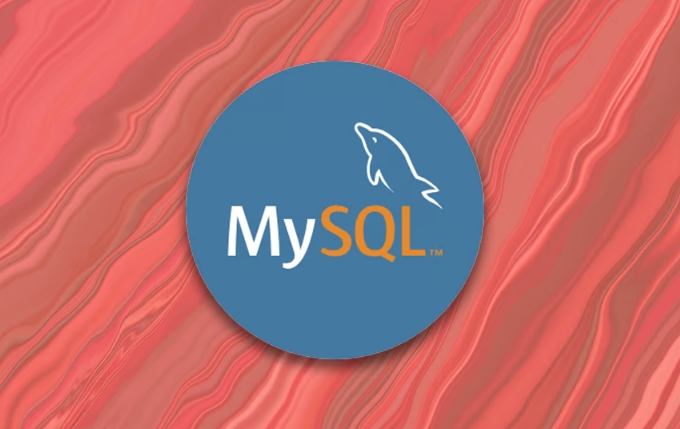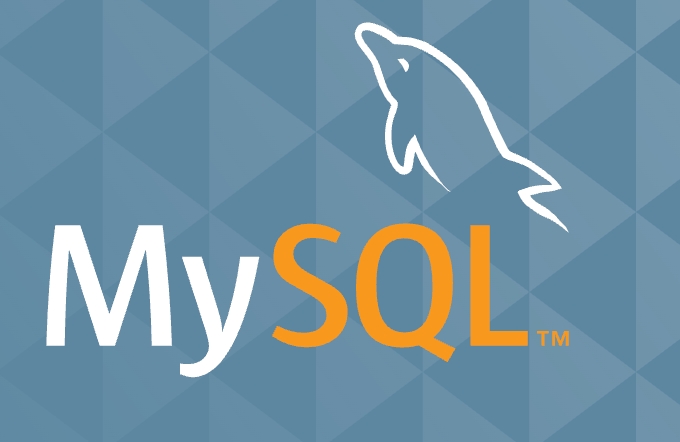To move data into MySQL efficiently, first understand your data sources, then choose appropriate tools, clean data beforehand, and monitor performance. Begin by identifying the source format—CSV, Excel, other databases, or APIs—as this determines the migration method. Next, select tools like MySQL Workbench for visual transfers, mysqldump for SQL-based systems, ETL tools for complex transformations, scripts for custom logic, or bulk loaders like LOAD DATA INFILE for speed. Clean data before migration by ensuring field types, date formats, NULL values, and character sets align. Avoid single-row inserts; use batch processing instead. Load into temporary tables for cleanup when necessary. Monitor server resources, transactions, and locking issues during migration. Implement logging, handle errors gracefully, and maintain backups with rollback procedures to ensure data integrity.

Moving data into MySQL is a common task for developers, DBAs, and even business analysts dealing with databases. Whether you're consolidating systems, setting up a new environment, or just shifting from another database platform, doing it right matters. Here's how to get it done efficiently and reliably.

Understand Your Data Sources
Before jumping into migration tools or scripts, take time to understand where your data is coming from. MySQL can import from many sources — CSV files, Excel spreadsheets, other databases like PostgreSQL or Oracle, and even APIs.
Some common scenarios:

- Migrating from an old system (e.g., Access or legacy SQL Server)
- Importing user-generated CSVs
- Syncing with external services via API-extracted JSON
Knowing the format, volume, and structure of your source data helps you choose the best migration method. For example, small flat files are easy with LOAD DATA INFILE, while complex schemas may need transformation layers.
Use the Right Tools for the Job
There’s no one-size-fits-all tool for migrating to MySQL, but here are some solid options depending on your situation:

- MySQL Workbench – Great for visual schema migration and basic data transfer between compatible databases.
- mysqldump source DB export – If moving from another SQL-based system, exporting as SQL and cleaning it up works well.
- ETL tools (like Talend or Pentaho) – Useful when transforming data during migration, especially if you’re pulling from multiple sources.
- Scripts (Python, PHP, etc.) – Ideal for custom logic, especially if data needs validation or formatting before insertion.
-
Bulk loaders (like
LOAD DATA INFILE) – Fastest way to import large CSV or TSV files directly into tables.
If you're dealing with hundreds of thousands of rows, avoid using single-row INSERT statements. Batch inserts or bulk load commands will save you a lot of time.
Prepare and Clean Data Before Migration
Data rarely moves over perfectly. Even if your schema matches, inconsistencies in formats, encoding, or missing fields can cause errors.
Here are a few things to check:
- Field types match (e.g., VARCHAR lengths, INT vs BIGINT)
- Date/time formats are consistent
- NULL values handled correctly
- Character sets match (UTF-8 is standard these days)
One often-overlooked step is creating indexes after loading data. Adding indexes before inserting large datasets can slow things down significantly. Wait until after the data is in place, then build your indexes.
Also, consider using temporary tables. Load your raw data into a staging table first, clean it up there, then move it into your final tables.
Monitor Performance and Handle Errors Gracefully
Migrations can fail silently or grind performance to a halt if not managed properly. Keep an eye on:
- Server resource usage (CPU, memory, disk I/O)
- Long-running transactions
- Locking issues, especially if the database is live
Use logging to track what’s been imported and where errors occurred. Don’t ignore warnings — they might point to data loss or truncation issues.
If something goes wrong, have rollback procedures ready. This could be as simple as keeping the original data source intact until you confirm everything moved cleanly.
And don’t forget backups. Always back up both your target MySQL database and the source before starting any migration.
That’s pretty much it. Migrating data to MySQL doesn’t have to be painful — just plan ahead, pick the right tools, and double-check your work.
The above is the detailed content of Migrating Data to MySQL: Best Practices and Tools. For more information, please follow other related articles on the PHP Chinese website!

Hot AI Tools

Undress AI Tool
Undress images for free

Undresser.AI Undress
AI-powered app for creating realistic nude photos

AI Clothes Remover
Online AI tool for removing clothes from photos.

Clothoff.io
AI clothes remover

Video Face Swap
Swap faces in any video effortlessly with our completely free AI face swap tool!

Hot Article

Hot Tools

Notepad++7.3.1
Easy-to-use and free code editor

SublimeText3 Chinese version
Chinese version, very easy to use

Zend Studio 13.0.1
Powerful PHP integrated development environment

Dreamweaver CS6
Visual web development tools

SublimeText3 Mac version
God-level code editing software (SublimeText3)
 Performing logical backups using mysqldump in MySQL
Jul 06, 2025 am 02:55 AM
Performing logical backups using mysqldump in MySQL
Jul 06, 2025 am 02:55 AM
mysqldump is a common tool for performing logical backups of MySQL databases. It generates SQL files containing CREATE and INSERT statements to rebuild the database. 1. It does not back up the original file, but converts the database structure and content into portable SQL commands; 2. It is suitable for small databases or selective recovery, and is not suitable for fast recovery of TB-level data; 3. Common options include --single-transaction, --databases, --all-databases, --routines, etc.; 4. Use mysql command to import during recovery, and can turn off foreign key checks to improve speed; 5. It is recommended to test backup regularly, use compression, and automatic adjustment.
 Calculating Database and Table Sizes in MySQL
Jul 06, 2025 am 02:41 AM
Calculating Database and Table Sizes in MySQL
Jul 06, 2025 am 02:41 AM
To view the size of the MySQL database and table, you can query the information_schema directly or use the command line tool. 1. Check the entire database size: Execute the SQL statement SELECTtable_schemaAS'Database',SUM(data_length index_length)/1024/1024AS'Size(MB)'FROMinformation_schema.tablesGROUPBYtable_schema; you can get the total size of all databases, or add WHERE conditions to limit the specific database; 2. Check the single table size: use SELECTta
 Handling character sets and collations issues in MySQL
Jul 08, 2025 am 02:51 AM
Handling character sets and collations issues in MySQL
Jul 08, 2025 am 02:51 AM
Character set and sorting rules issues are common when cross-platform migration or multi-person development, resulting in garbled code or inconsistent query. There are three core solutions: First, check and unify the character set of database, table, and fields to utf8mb4, view through SHOWCREATEDATABASE/TABLE, and modify it with ALTER statement; second, specify the utf8mb4 character set when the client connects, and set it in connection parameters or execute SETNAMES; third, select the sorting rules reasonably, and recommend using utf8mb4_unicode_ci to ensure the accuracy of comparison and sorting, and specify or modify it through ALTER when building the library and table.
 Implementing Transactions and Understanding ACID Properties in MySQL
Jul 08, 2025 am 02:50 AM
Implementing Transactions and Understanding ACID Properties in MySQL
Jul 08, 2025 am 02:50 AM
MySQL supports transaction processing, and uses the InnoDB storage engine to ensure data consistency and integrity. 1. Transactions are a set of SQL operations, either all succeed or all fail to roll back; 2. ACID attributes include atomicity, consistency, isolation and persistence; 3. The statements that manually control transactions are STARTTRANSACTION, COMMIT and ROLLBACK; 4. The four isolation levels include read not committed, read submitted, repeatable read and serialization; 5. Use transactions correctly to avoid long-term operation, turn off automatic commits, and reasonably handle locks and exceptions. Through these mechanisms, MySQL can achieve high reliability and concurrent control.
 Managing Character Sets and Collations in MySQL
Jul 07, 2025 am 01:41 AM
Managing Character Sets and Collations in MySQL
Jul 07, 2025 am 01:41 AM
The setting of character sets and collation rules in MySQL is crucial, affecting data storage, query efficiency and consistency. First, the character set determines the storable character range, such as utf8mb4 supports Chinese and emojis; the sorting rules control the character comparison method, such as utf8mb4_unicode_ci is case-sensitive, and utf8mb4_bin is binary comparison. Secondly, the character set can be set at multiple levels of server, database, table, and column. It is recommended to use utf8mb4 and utf8mb4_unicode_ci in a unified manner to avoid conflicts. Furthermore, the garbled code problem is often caused by inconsistent character sets of connections, storage or program terminals, and needs to be checked layer by layer and set uniformly. In addition, character sets should be specified when exporting and importing to prevent conversion errors
 Connecting to MySQL Database Using the Command Line Client
Jul 07, 2025 am 01:50 AM
Connecting to MySQL Database Using the Command Line Client
Jul 07, 2025 am 01:50 AM
The most direct way to connect to MySQL database is to use the command line client. First enter the mysql-u username -p and enter the password correctly to enter the interactive interface; if you connect to the remote database, you need to add the -h parameter to specify the host address. Secondly, you can directly switch to a specific database or execute SQL files when logging in, such as mysql-u username-p database name or mysql-u username-p database name
 Setting up asynchronous primary-replica replication in MySQL
Jul 06, 2025 am 02:52 AM
Setting up asynchronous primary-replica replication in MySQL
Jul 06, 2025 am 02:52 AM
To set up asynchronous master-slave replication for MySQL, follow these steps: 1. Prepare the master server, enable binary logs and set a unique server-id, create a replication user and record the current log location; 2. Use mysqldump to back up the master library data and import it to the slave server; 3. Configure the server-id and relay-log of the slave server, use the CHANGEMASTER command to connect to the master library and start the replication thread; 4. Check for common problems, such as network, permissions, data consistency and self-increase conflicts, and monitor replication delays. Follow the steps above to ensure that the configuration is completed correctly.
 Strategies for MySQL Query Performance Optimization
Jul 13, 2025 am 01:45 AM
Strategies for MySQL Query Performance Optimization
Jul 13, 2025 am 01:45 AM
MySQL query performance optimization needs to start from the core points, including rational use of indexes, optimization of SQL statements, table structure design and partitioning strategies, and utilization of cache and monitoring tools. 1. Use indexes reasonably: Create indexes on commonly used query fields, avoid full table scanning, pay attention to the combined index order, do not add indexes in low selective fields, and avoid redundant indexes. 2. Optimize SQL queries: Avoid SELECT*, do not use functions in WHERE, reduce subquery nesting, and optimize paging query methods. 3. Table structure design and partitioning: select paradigm or anti-paradigm according to read and write scenarios, select appropriate field types, clean data regularly, and consider horizontal tables to divide tables or partition by time. 4. Utilize cache and monitoring: Use Redis cache to reduce database pressure and enable slow query






